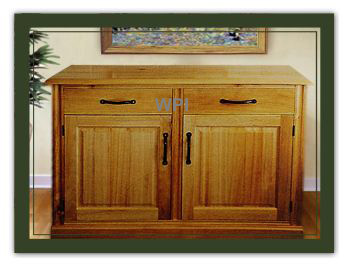TECHNICAL CHARACTERISTICS OF PAULOWNIA WOOD
& THE PHYSICAL PROPERTIES OF PAULOWNIA
TECHNICAL CHARACTERISTICS OF PAULOWNIA WOOD
Paulownia is a deciduous Hardwood that has silky light golden – blonde colored wood. Even though the trees grow very fast the grain of finished wood has a lot of character. Paulownia takes stain perfectly and can easily resemble Mahogany or Walnut with the right stain.
Paulownia wood machines and works well, it is very dimensionally stable and is not subject to warping, cupping or splitting even when exposed to outdoor elements. Paulownia has machining and woodworking characteristics similar to NW Red Cedar and is not affected by humidity and Moisture. Paulownia has a natural resistance to Termites.
Paulownia Grows Naturally from the North to the South of China and Varieties change across this vast area according to the specific climatic and ecological tolerances of the particular cultivar, as a result the density or specific gravity of the wood varies according to Variety and the Growing conditions.
For Decades Japanese Craftsmen have utilized this revered wood in Ceremonial furniture, footwear (clogs) Musical Instruments, Decorative moldings, Laminated Structural Beams and Shipping Containers. The wood is light but strong and will not crack or split when nails or screws are used.


PHYSICAL PROPERTIES OF PAULOWNIA
- Paulownia is light weight 17 to 21lbs per cubic foot as compared to Appalachian Red Oak at 39 to 41 lbs per cubic foot.
- Paulownia air dries in 30 to 60 days without cupping, warping, cracking or splitting. Kiln drying takes 36 to 60 hours depending on Dry kiln configuration, horsepower and dimension of lumber.
- Paulownia is resistant to decay and rotting provided it is not in permanent contact with the ground.
- Paulownia species vary in porosity according to Variety but range from 75 to 88% in comparison with poplar 70 to 72%.
- Fire resistance is a feature of all Paulownia, Ignition temp 420 to 430 deg Celsius as compared to Average hardwood at 220 to 225 deg Celsius.
- Density of Paulownia species @10% moisture content ranges from 17.8 to 23.2 depending on Variety and growing conditions.
- Thermal conductivity of Paulownia is very low thus giving it excellent heat/cool insulation properties.
- Chemical composition of Paulownia Varieties: Hemicellulose Pentozan 22 to 25%. Cellulose 46 to 49%. Lignin 21 to 23% Water 7 to 8% Ash .50 to 1.1% Fiber 58.5 to 60.1%
